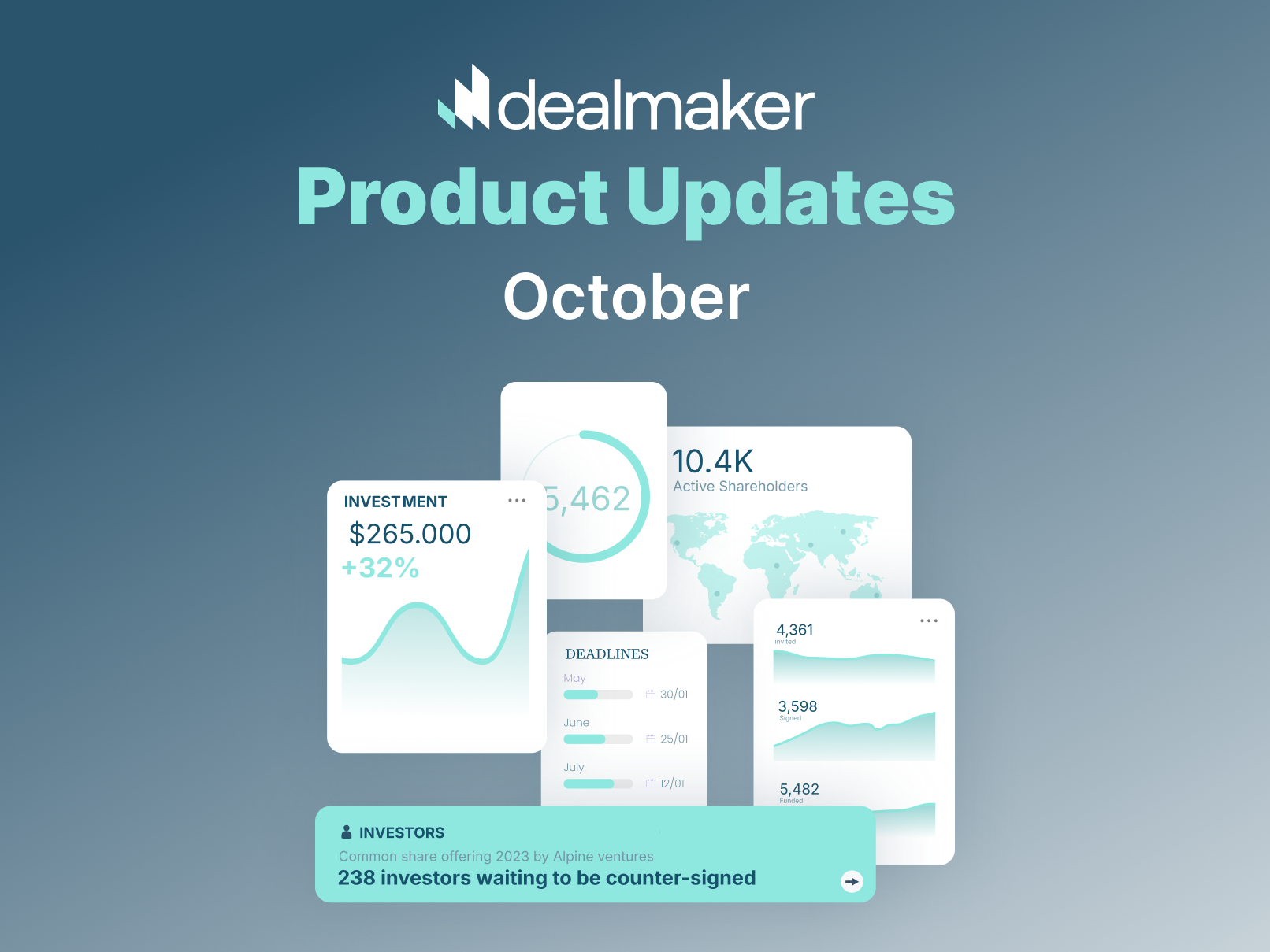Raise Capital
May 12, 2023
What you need to know about the latest capital reform proposals
After more than three months of hearings and markups, the US House Financial Services Committee has officially approved 15 new pieces of legislation intended to expand access to capital for growing companies and encourage middle- and late-market companies to go public.
The approved bills are now headed to a House vote; those that pass by simple majority will move to the Senate for consideration. It’s important to note that House committee approval is one of the very first steps on the long and complicated journey to actually becoming law—which means it’s impossible to know for sure which, if any, will be successful.
Still, the hearings have been unusually collaborative so far, with nearly half of the approved bills receiving unanimous support in the latest vote. That could be a good sign: it indicates that lawmakers on both sides of the aisle are willing to work together to enact positive change for growing businesses.
Three of the approved bills in particular are predicted to have a massive impact on the entire startup funding ecosystem if enacted. Let’s dig into those three bills and what could happen if they are signed into law.
The Expanding Access to Capital Act (H.R. 2799)
Of the three bills we’ll cover today, the Expanding Access to Capital Act (H.R. 2799) was the most contentious, passing with 28 ayes to 21 nays. One of the key changes it proposes is a substantial improvement to Regulation A+: doubling the maximum offering amount from $75M to $150M per 12-month period.
A $150M offering max would be a huge deal for Reg A+ and the overall equity crowdfunding industry. It would make the exemption much more attractive to larger, more established startups that have greater capital requirements—especially in a market where companies are staying private longer and IPOs are hitting record lows.
The bill would also allow certain low-revenue companies to raise from accredited investors without needing to go through the cumbersome and expensive process of registering with the SEC. In short, H.R. 2799 would make it easier for small and medium-sized businesses to access capital (and more of it, too).
The Accredited Investor Definition Review Act (H.R. 1579)
The Accredited Investor Definition Review Act is a bill that seeks to amend the definition of "accredited investor" to expand the pool of individuals and entities that can invest in private securities offerings.
Currently, the definition of an accredited investor is based on income and net worth requirements that have not been updated in many years—and fail to account for the fact that simply having money doesn’t make a person particularly skilled at making it.
The committee heard testimony from entrepreneurs and VCs who argued that the current accreditation restrictions aren’t just onerous—they’re unfair. Rodney Sampson, founder and CEO of Opportunity Hub, spoke in favor of changing the rule:
“I don’t see a lot of legislation blocking people from buying Yeezys or going to Vegas. I think you should be able to invest in your frat brothers’ business.”
– Rodney Sampson, CEO @ Opportunity Hub
Though tongue-in-cheek, it’s a fair question to ask: If Americans can legally gamble away their life savings at a casino, or spend the bulk of their income on lottery tickets, why should they be barred from participating in potentially high-growth investment opportunities?
If H.R. 1579 passes, the SEC will be required to review the accredited investor definition every five years, considering factors like education, certifications, and experience as indicators of financial sophistication. Proponents hope this periodic review will gradually expand the definition so that it includes more non-wealthy individuals who can prove they know what they’re doing.
A similar bill that was also approved, the Equal Opportunity for All Investors Act (H.R. 2797), would allow individual investors to qualify by passing an examination or course—a much cheaper and more efficient avenue for knowledgable investors who haven’t made it their formal career (and thus have no need for the relevant certifications or degrees).
The Middle Market IPO Underwriting Cost Act (H.R. 2812)
According to recent data from CB Insights, quarterly IPOs in the US hit their lowest level in nearly a decade in Q1 2023, with just 86 companies taking the plunge. It’s no surprise that companies are delaying their plans to go public—between inflation, the ongoing banking crisis, and generally poor stock market performance, many companies that are “ready” have decided to wait for better conditions.
The result is a massive backlog of large companies that “should” be publicly-listed, but aren’t. With billions of dollars in venture capital tied up in exit purgatory, earlier-stage companies are suffering from the downstream effects: fewer and smaller deals, with more investor-favored offering terms.
While current economic conditions are certainly adding pressure to the situation, the decline of the initial public offering has been a subject of concern for many years now. IPOs are an important “last step” in the funding life cycle; they help to fuel innovation and economic growth by providing companies with access to capital that can be used to develop new products, technologies, and services. Additionally, IPOs are a key liquidity tool for early investors while creating opportunities for the general public to buy and trade in the company’s stock..
The Middle Market IPO Underwriting Cost Act, if enacted, would require the SEC to work with FINRA to conduct a study of the costs small- and medium-sized companies incur when they go public. The goal is to identify and analyze the impact these costs have on growing businesses; to determine whether they’ve changed substantially over time; and to deliver a report to Congress detailing all findings and recommendations they come up with.
What happens next
As we mentioned before, approval of the 15 bills by the House Financial Services Committee doesn’t mean they’re going to be signed into law. In order for that to happen, all of the following steps still need to take place:
- The bills must be debated and voted on by the House, and need to win at least a simple majority (218 of 435 votes);
- They’ll then move to the Senate, which will assign the bills to a committee;
- The committee will review and potentially revise the bills before deciding whether to send them to the Senate floor for a vote;
- If the bills win a majority vote in the Senate, they will be sent to the President;
- And the President must sign the bill into law (or do nothing, in which case the bill becomes law automatically after 10 days).
All that is to say that these proposed changes are still in the earliest stages of the process—and it’s impossible to know for sure how the chips will fall. But early indicators suggest widespread bipartisan support for the bills’ underlying missions: to make it easier for companies and investors to access opportunities for growth.

Your submission has been received. We will reach out to you via email to schedule a call.
Oops! Something went wrong while submitting the form.



.png)





.webp)
.webp)
.webp)
%20(1).webp)

.webp)